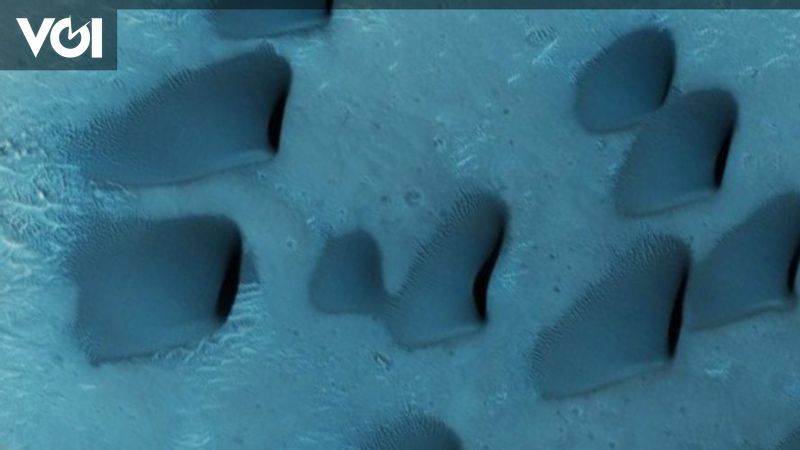JAKARTA – Planet Mars is known for its brown and sandy dunes. But new photos from NASA have now revealed beautiful blue sand dunes on the Martian surface. For a planet so eager to be colonized by humans someday, Mars has a lot of work against us.
Mars is known, frozen, has a very thin atmosphere, and its surface is an endless sea of rock, sand, and dust. There may be a future where humans live on Mars as they do on Earth, but it will take a lot of time, money and research to get to that point.
While it may be a while before humans cross Mars, NASA is unrelenting with robotics exploring the planet. The Perseverance rover was searching for signs of ancient life, the Ingenuity helicopter made history as the first remote-controlled craft on another planet, and the InSight probe created detailed maps of the interior of Mars. All of these missions are essential to learning more about the planet, and each one makes exciting discoveries almost every day.
One of the most recent examples of this comes from NASA Mars Reconnaissance Orbiter. The reconnaissance was launched in August 2005 and has been orbiting Mars since March 2006. The US$720 million spacecraft has proven extremely useful during its more than 15 years of operation, but has just returned with what may be one of the most astonishing discoveries.
What you see above is a photo of the blue sand dunes on Mars. Martian dunes aren’t anything new, but they don’t usually look like this. Usually, they have quite drab yellow, orange, and brown colors. These dunes, however, have a distinct blue appearance. They are confusing, beautiful, and absolutely stunning.
Although the dunes look amazing, there is a logical explanation for their stunning blue aesthetic. These dunes are not actually blue. If one were to visit this location on Mars now, the dunes would appear orange and brown like the rest. It was because this was a ‘fake color image’. False color images are often used in astronomy to represent a change in something. In this case, the color indicates a change in depth.
The yellow/orange part of the second photo shows normal surface levels. In comparison, the blue dunes are much deeper and lower to the ground (further revealed by the shadows in the image). So even though the dunes aren’t blue, they are in fairly deep craters on Mars — specifically, the area near Firsoff Crater.
If anything, this is further evidence of just how diverse the Martian surface is. Whether it’s a huge crater with dunes inside, strange rocks that look like worms, or a vast horizon that mimics the scenery you’d find on Earth, the sights on Mars are nothing short of impressive.
Future humans may someday be able to see these things for themselves. Until then, we’ll all be relying on hardworking robots to share images like this for everyone to gawk at.
– .


